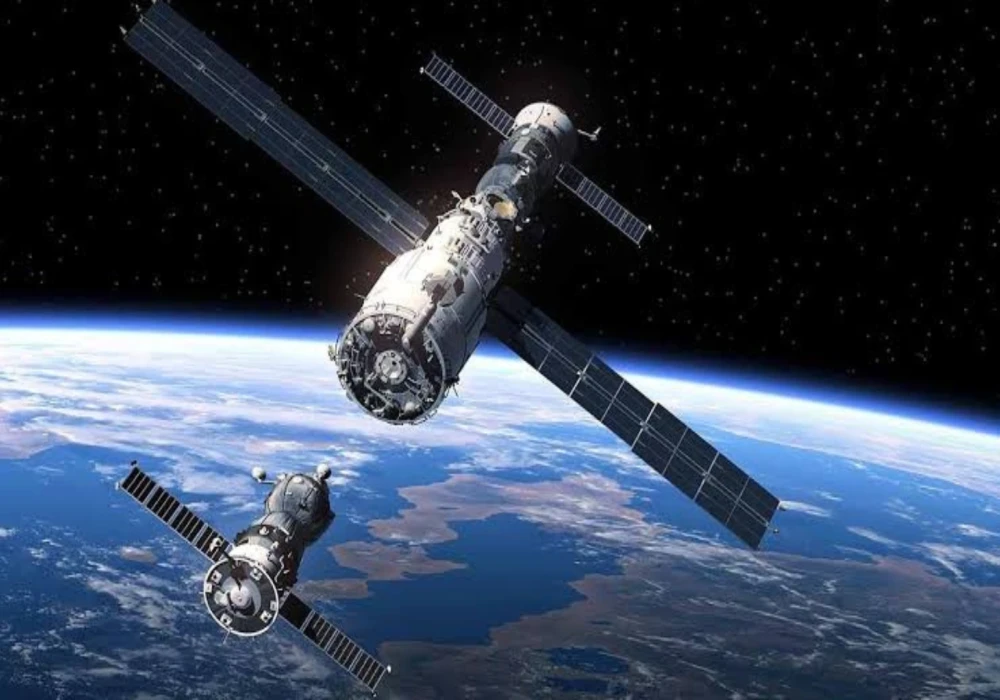
In a groundbreaking achievement for India's space exploration efforts, the Indian Space Research Organisation (ISRO) has successfully docked its SpaDeX satellites in space. This accomplishment makes India the fourth country in the world, after the United States, Russia, and China, to possess the advanced ability to rendezvous, dock, and undock spacecraft in orbit. The docking marks a major leap forward for India’s space capabilities, positioning the country as a global leader in space technology.
The Docking Experiment
The historic docking took place in the early hours of January 16, 2025. The operation was described as a "meticulous dance" between two satellites, as they flawlessly executed a series of manoeuvres to bring them into alignment. The two satellites involved in the experiment were SDX01, the "Chaser" satellite, and SDX02, the "Target" satellite, each weighing approximately 220 kg.
The engineers from ISRO meticulously planned the operation, and the two satellites, navigating the vast expanse of space, closed the distance from 1.5 kilometers down to just 3 meters before docking successfully. ISRO's official statement confirmed the operation’s success, stating: "Manoeuvre from 15m to 3m hold point completed. Docking initiated with precision, leading to successful spacecraft capture. Retraction completed smoothly, followed by rigidisation for stability. Docking successfully completed."
Challenges and Delays in the Docking Process
Initially, ISRO had planned the docking for January 7, followed by January 9, but faced technical challenges that led to delays. The agency made multiple attempts to achieve the docking, with a particularly close attempt on January 11, which was aborted just moments before completion. Despite these setbacks, ISRO's engineers conducted careful evaluations and adjustments to ensure the satellites were in optimal condition.
The successful docking was the result of precision engineering, problem-solving, and the dedication of ISRO's scientists and engineers, who worked tirelessly to overcome the technical hurdles. After confirming that both satellites were in good health and ready for docking, the mission proceeded smoothly, marking a monumental step in India’s space journey.
Significance of the Achievement
This milestone achievement is being hailed as a major step forward for India’s ambitions in space exploration. The demonstration of autonomous docking technology is essential for future missions, including lunar exploration and the development of the Bharatiya Antariksh Station (BAS). The successful docking not only highlights ISRO's engineering capabilities but also reinforces India's position as a growing player in global space research and exploration.
India Joins Elite Group of Nations in Space Technology
With the successful SpaDeX satellite docking, India joins an exclusive group of nations—namely the United States, Russia, and China—that have mastered the art of in-space docking technology. This capability is crucial for complex space missions that require multiple spacecraft to operate in unison, such as future deep-space exploration and crewed missions to the Moon, which India hopes to achieve by 2040.
Pathway to Future Missions: Chandrayaan-4 and Beyond
The SpaDeX mission’s success also has significant implications for upcoming ISRO missions, such as the Chandrayaan-4 mission. The Chandrayaan-4 mission will focus on collecting lunar samples, including rocks and soil, and returning them to Earth. The mission will present its own set of technical challenges, especially the docking of spacecraft above the Moon to facilitate the collection and return of lunar material.

_500_x_350.webp)
 (1)_500_x_350.webp)







